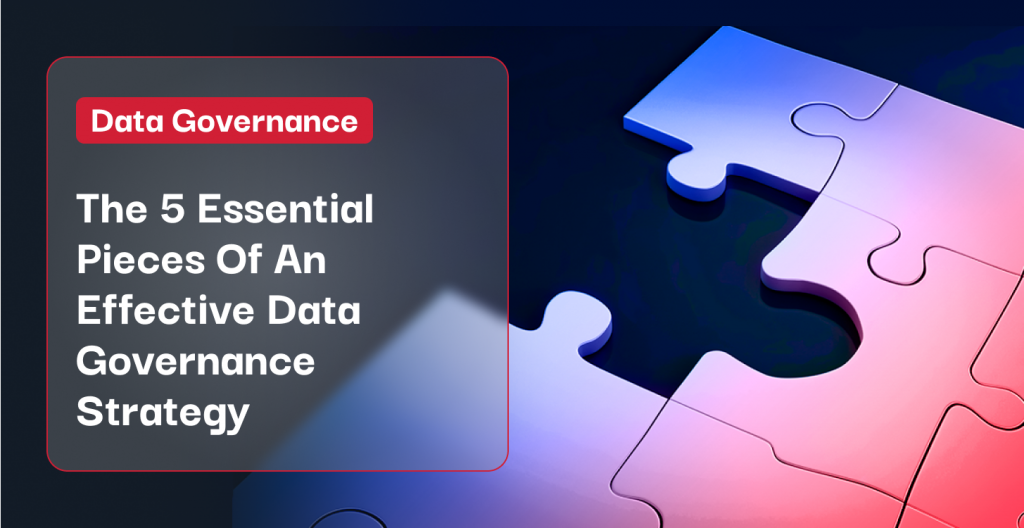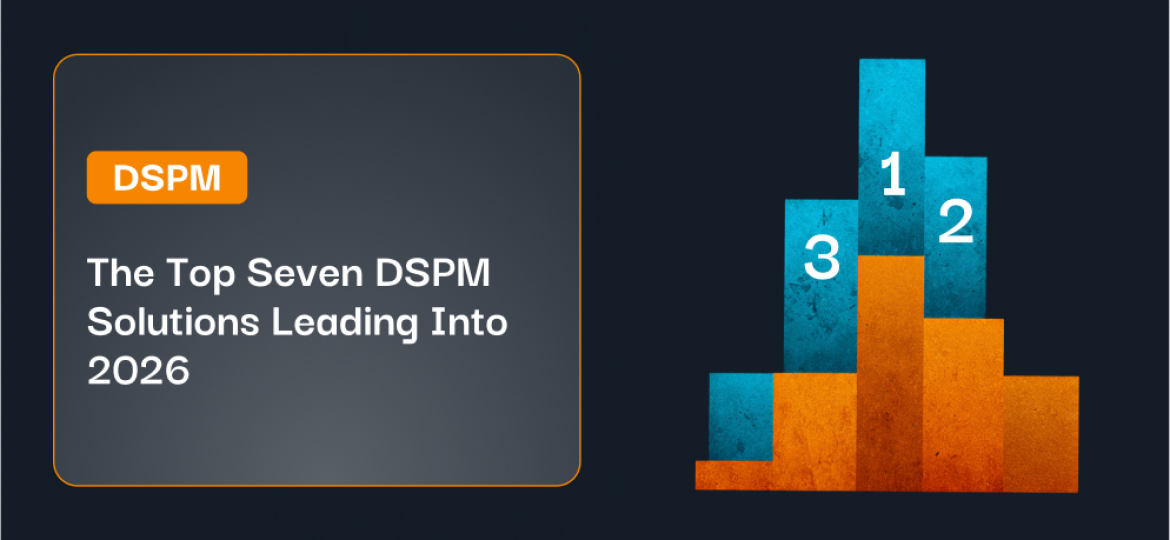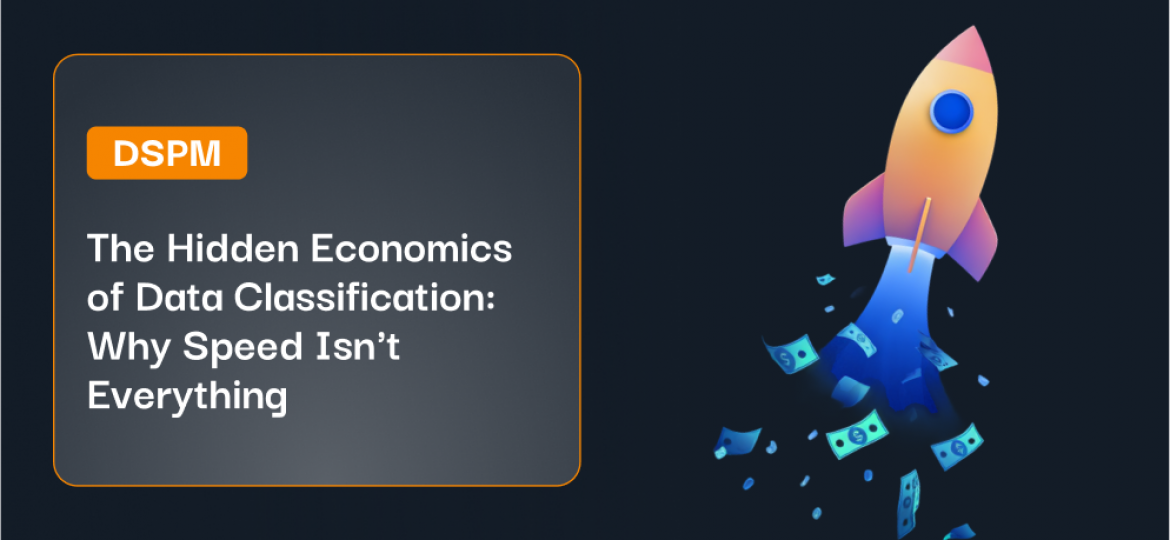Data sprawl is an ever worsening issue for businesses in the era of cloud-based services, with each new solution requiring its own levels of access and permission. A recent survey found that 43% of enterprises use an average of four to six platforms to manage their data, and a further 11% use up to a dozen of them.
With data distributed in the cloud and in on-premises storage, there’s only one way to ensure all of your data is effective, secure, and available whenever you need it: establishing a strong data governance strategy. What that looks like for any given business will vary, but this article will run down 5 fundamental factors that every business should account for.
Jump to a section
What is a data governance strategy
Key components of a data governance strategy
Data governance model
Data governance operating model
Data governance maturity model
Distribution processes
Continual assessment and adaptation
Protect your data wherever it’s stored
Learn more about how to keep you and your business’ information secure with the Symmetry Systems’ guide, What Is Data Governance?
What is a data governance strategy
A data governance strategy is the groundwork for how your organization handles its data at every stage of its lifecycle: from creation, to storage, to retrieval and use, to archiving or destruction. Contrasted with data management, which is the particular set of IT standards and actions used in the use and conveyance of data, data governance takes a top-level view of the people, processes, and philosophies that guide how an organization approaches this key asset.
A well-implemented data governance strategy can have numerous benefits for an enterprise. Most obviously, it helps to ensure your data-handling methods will remain in compliance with broader regulatory requirements such as GDPR, as well as industry-specific standards required for sensitive private data. It can also result in a more efficient and effective workplace; one study found that an average of 30 percent of enterprise employees’ working time was spent on non-value-added tasks necessary to compensate for poor data quality and availability, which could be ameliorated or even eliminated by proactive data governance.
Key components of a data governance strategy
With the definition and value of a data governance strategy established, here are five assets and processes your organization should account for as it creates or updates its own strategy.
Data governance model
At the heart of every data governance strategy is a data governance model. This is the set of responsibilities and procedures that dictates organization-wide policy relating to the creation, use, and upkeep of data. Every part of a business that creates or uses data should be accounted for in the data governance model, though the administration of the model itself will vary.
For instance, a centralized data governance model puts the responsibility of managing data in the hands of a small team of professionals, who use set methodologies to ensure data is clean, reliable, and up to date. Since only this dedicated team has direct control of the organization’s data, this approach is highly effective for maintaining high standards, but can quickly create impractical bottlenecks for larger organizations. Alternatively, federated or collaborative data governance models distribute responsibilities across the organization, with higher-level data owners and lower-level stewards working together to ensure standards are met interdepartmentally.
Data governance operating model
A data governance operating model is the data governance model’s tactical counterpart. It dictates specific steps employees should take when creating and handling data, and should feed directly into the broader goals laid out in your DGM.
Data governance operating models share overlap with the field of data management. However, while the technical specifics of data management are frequently associated with the IT department, all employees who work with data should be able to understand and abide by their organization’s data governance operating model.
Data governance maturity model
Implementing a data governance strategy is a broad, organization-wide effort, and the effects of its implementation are equally far-reaching. As such, it can be difficult to quantify and track how your organization is faring at implementing its model, with any one KPI unlikely to reflect the systemic and philosophical shifts necessary for success. Thankfully, established data governance maturity models make tracking your progress easy with guiding questions and rubrics.
The state of Oklahoma’s Office of Management & Enterprise Services offers an excellent (and free) data governance maturity model that will help you track your organization’s process across 5 progressive levels.
Distribution processes
No less important than creating your data governance model is ensuring the right stakeholders across your organization are looped into its creation, and accountable for its administration. For smaller organizations, this may be as simple as adding a new line item to discuss and follow up on at weekly meetings. For larger organizations, more formal onboarding processes should be implemented for both existing and new employees.
This distribution process should be a two-way street, with employees empowered to suggest changes or request further elaboration on parts of the model that may not make sense to them; any set of processes is only as effective as it is practical to implement in real-life situations.
Continual assessment and adaptation
Continuing on from that last note, the development of a strong data governance strategy is never finished. Intake and usage patterns for data will naturally shift as a business expands into new pursuits or steps back from others. As we mentioned in the introduction, this is of particular importance for organizations that share data with a shifting selection of cloud-based services, where data could be nearly anywhere in the world at any given time.
Changes in the regulatory environment around your business must also be accounted for in your data governance strategy. In short, the strategy should be updated regularly, ensuring that this effective and well-honed tool never deteriorates into an administrative stumbling block at best or a liability at worst.
Protect your data wherever it’s stored
Implementing a data governance strategy is a process of discovering where your data lives and how it is used, and plotting out what changes you can make to create more efficient and secure workflows across your entire organization. Going through this process makes the need for a strong data security posture all the more evident.
The modern reality of working across hybrid data environments is that there are more potential vulnerabilities to discover and address in more places than ever before. Thankfully, you don’t need to undertake this process on your own. Symmetry Systems DataGuard helps security teams protect sensitive data stored in the cloud, visualizing where sensitive data is stored as well as who has access to it. It even makes recommendations to address potential security issues before they can be exploited.
If you’d like to learn more about how Symmetry Systems DataGuard can become part of your data governance strategy, contact us today to learn more.






